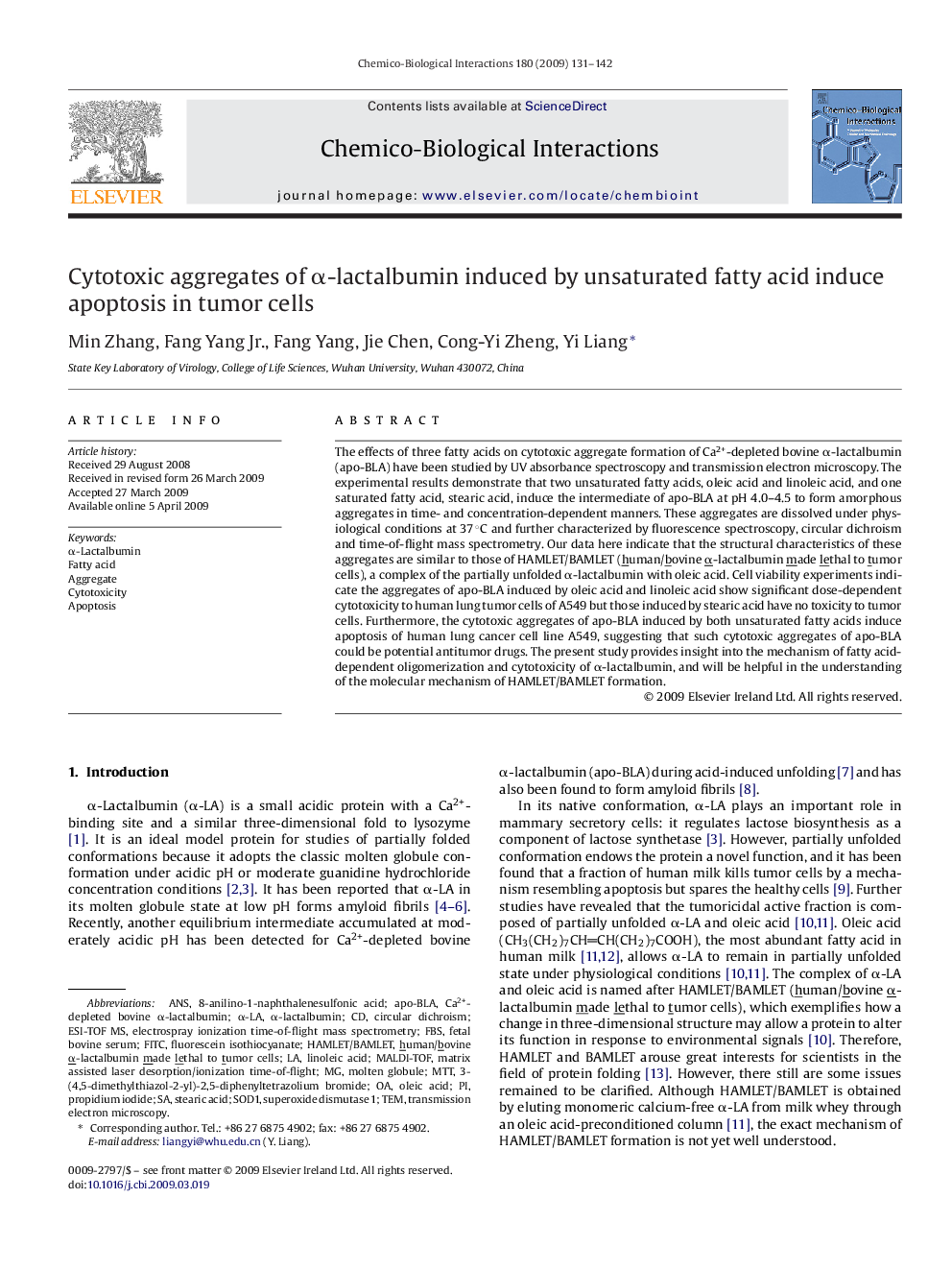| Article ID | Journal | Published Year | Pages | File Type |
|---|---|---|---|---|
| 2582111 | Chemico-Biological Interactions | 2009 | 12 Pages |
Abstract
The effects of three fatty acids on cytotoxic aggregate formation of Ca2+-depleted bovine α-lactalbumin (apo-BLA) have been studied by UV absorbance spectroscopy and transmission electron microscopy. The experimental results demonstrate that two unsaturated fatty acids, oleic acid and linoleic acid, and one saturated fatty acid, stearic acid, induce the intermediate of apo-BLA at pH 4.0-4.5 to form amorphous aggregates in time- and concentration-dependent manners. These aggregates are dissolved under physiological conditions at 37 °C and further characterized by fluorescence spectroscopy, circular dichroism and time-of-flight mass spectrometry. Our data here indicate that the structural characteristics of these aggregates are similar to those of HAMLET/BAMLET (human/bovine α-lactalbumin made lethal to tumor cells), a complex of the partially unfolded α-lactalbumin with oleic acid. Cell viability experiments indicate the aggregates of apo-BLA induced by oleic acid and linoleic acid show significant dose-dependent cytotoxicity to human lung tumor cells of A549 but those induced by stearic acid have no toxicity to tumor cells. Furthermore, the cytotoxic aggregates of apo-BLA induced by both unsaturated fatty acids induce apoptosis of human lung cancer cell line A549, suggesting that such cytotoxic aggregates of apo-BLA could be potential antitumor drugs. The present study provides insight into the mechanism of fatty acid-dependent oligomerization and cytotoxicity of α-lactalbumin, and will be helpful in the understanding of the molecular mechanism of HAMLET/BAMLET formation.
Keywords
SOD1ESI-TOF MSFBSFITCMALDI-TOF8-anilino-1-naphthalenesulfonic acid3-(4,5-dimethylthiazol-2-yl)-2,5-diphenyltetrazolium bromideMTTα-Laα-LactalbuminStearic acidOleic acidLinoleic acidFatty acidTemAggregateApoptosiscircular dichroismANSfetal bovine serumCytotoxicitysuperoxide dismutase 1electrospray ionization time-of-flight mass spectrometryfluorescein isothiocyanateMatrix assisted laser desorption/ionization time-of-flightTransmission electron microscopyPropidium iodideMolten globule
Related Topics
Life Sciences
Environmental Science
Health, Toxicology and Mutagenesis
Authors
Min Zhang, Fang Jr., Fang Yang, Jie Chen, Cong-Yi Zheng, Yi Liang,
